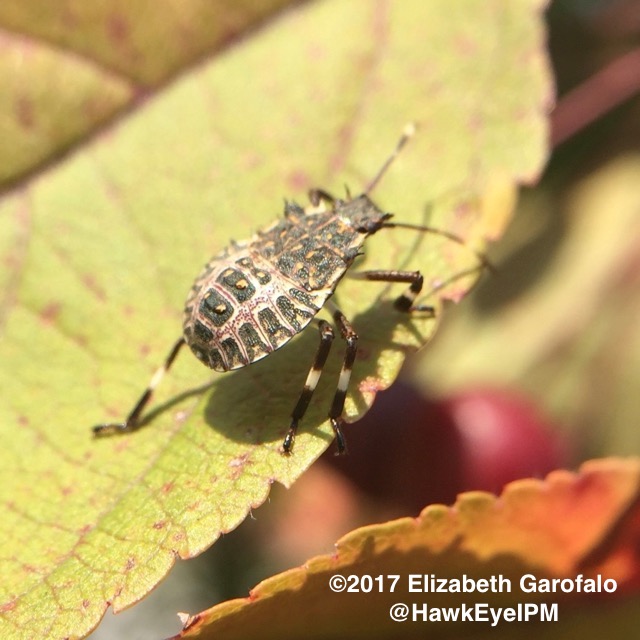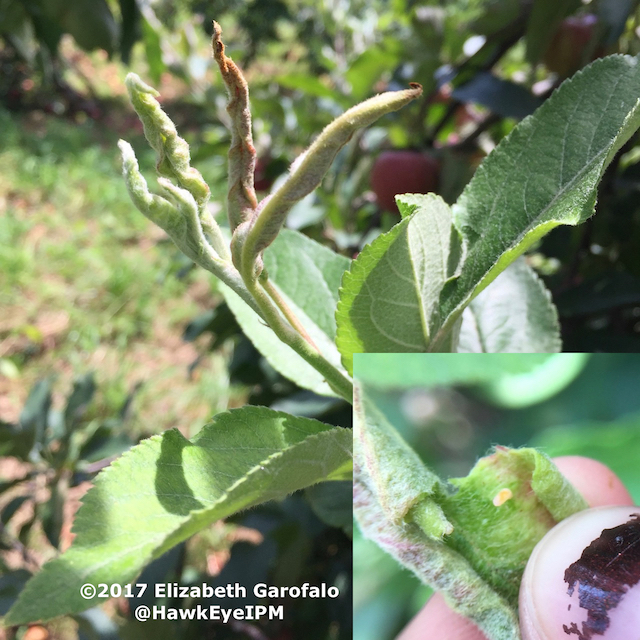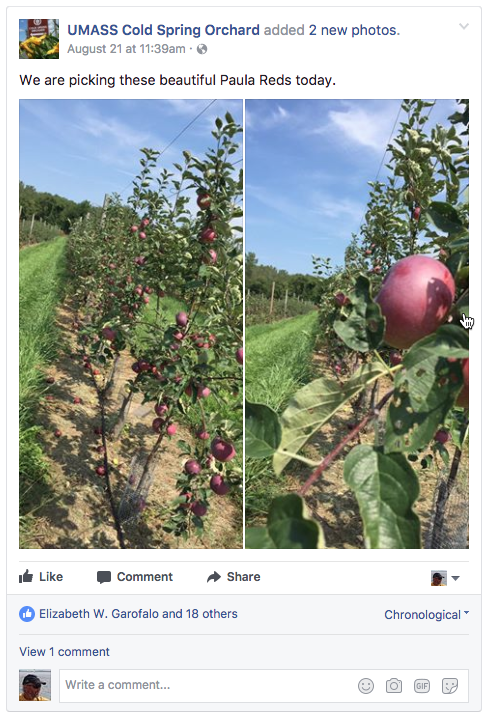

Jon Clements, Author (unless otherwise noted) and Editor
New England Vegetable & Fruit Conference, December 12-14, 2017, Radisson Hotel, Manchester, NH. Press Release and http://newenglandvfc.org for more information.
Jon Clements
I see nothing terribly unusual so far this year, however, at the UMass Orchard we have a LOT of apples to pick. Note to self when thinning next year: lime sulfur at bloom, carbaryl and NAA @ petal fall, carbaryl and NAA or 6-BA at 10-12 mm when it is warm. You think that will work? Maybe some ethephon when the apples are 25 mm if there are any left? Of course this is all a non-issue if we come back light next year after this heavy crop -- which I am a little concerned about.
Maturity seems to be about right on track, and with the cooler weather upcoming, apples should start to color nicely. First Mac harvest will start September 5 please. Boy, now the Honeycrisp season starts in late August with Premier Honeycrisp (pictured below). Apples on these 2nd-leaf trees at the UMass Orchard were pretty stunning already, and there has been some significant drop. I know many of you have Premier Honeycrisp planted, you are going to have to watch it closely. As the trees age, I expect harvest will become a little later, but still looking like it's 2-3 weeks ahead of "regular" Honeycrisp.
BTW, I am currently fielding two orchard reports of significant Honeycrisp fruit russeting and/or cracking. Trying to track that down -- if anyone else has seen this, would appreciate hearing about it.
Apple maturity report for August 22, 2017 Healthy Fruit
| Date | Variety |
Drop? |
Diameter (inches) |
color (% red) |
Firmness (pounds) |
Soluble Solids |
Starch Index |
DA Reading |
Comments |
| 23-Aug, 2017 | none |
3.1 |
NA |
15.9 |
10.6 |
2-3 |
1.20 |
wait another week to harvest, but getting there | |
| 23-Aug, 2017 | few |
3.2 |
70 |
12.7 |
10.7 |
5-6 |
1.22 |
some watercore, expecting some uneven maturity, largely ready to harvest (FWIW) | |
| 23-Aug, 2017 | nil |
3 |
40 |
13.9 |
12.1 |
5 |
0.83 |
bruise easily, heavy crop, color could be better, otherwise ready to harvest | |
| 23-Aug, 2017 | nil |
2.9 |
65 |
14.6 |
13.5 |
5 |
0.28 |
calyx russet, yellow background mostly, nice flavor, variable crop load, touch of watercore, definitely ready; only question is are they going to kill Sansa off in GoT??? | |
| 23-August, 2017 | none |
2.8 |
65 |
18 |
12.3 |
6 |
0.97 |
could be picked, still on tart/acid side though | |
| 23-Aug, 2017 | yes, some |
3.2 |
50 |
12.8 |
11.6 |
6 (4-8) |
0.64 |
2nd-leaf trees, wow, the Honeycrisp season now starts in August! |

Nursery catalog picture of Premier Honeycrisp, UMass Orchard, 22-August, 2017
Elizabeth Garofalo and Jon Clements
Just a couple notes from the field. First, where are the Brown Marmorated Stink Bug (BMSB)? We in Massachusetts, along with colleagues in NH, RI, CT, and NY have been running extensive BMSB trapping network (at agricultural locations mostly), and with the exception of (just recently) CT, have been catching very few BMSB. Well, there is one minor exception in MA too, but that is in an urban setting (not agriculture) on the UMass campus. Note that we in Massachusetts have not documented any damage to crops yet by BMSB, including previous years, but they have been around now for quite a few years. I/we kind of expected to have a problem now. (I know, I am a glass half-full kind of guy.) Apparently, the most plausible explanation, according to Peter Jentsch at Cornell's Hudson Valley Lab is that both native and an introduced predator (the "samurai" wasp) of BMSB eggs have tuned in to the presence of BMSB (as well as native stink bugs) and are providing a high degree of biological control. Let's hope so. Stay tuned, just wanted to let you know we are keeping an eye on it. Any observations of BMSB by you in an orchard setting would be gladly(?) received by us. Bottom line, we don't think insecticides targeting BMSB are warranted in any way, shape or form yet. (Not that there aren't native stink bugs around that may be causing some fruit damage?)

BMSB nymph, UMass Campus, 22-August, 2017
Second, apple leaf curling midge was observed during a scouting trip. Although not often seen around these parts, it is around. (Parts of western NY have been more plagued by them in recent years.) Notably they don't cause much problem as long as an orchard-wide insecticide control program, including in young trees, is maintained. But this is what it looks like.

Apple leaf curling midge damage and larvae in western MA orchard, 23-August, 2017
Jon Clements
Nothing new and exciting this week. Apple harvest has started. Did I mention how nice Premier Honeycrisp looks? And if anyone has seen any fruit finish issues with Honeycrisp, I'd like to hear about it. If anyone needs starch-iodine solution for apple maturity testing, let me know, we can probably get you some.
No Guest article this week.
Follow me (jmcextman) on FB: https://www.facebook.com/jmcextman

New England Tree Fruit Management Guide
UMass Fruit Advisor: http://umassfruit.com
Scaffolds Fruit Journal: http://www.nysaes.cornell.edu/ent/scafolds/
Network for Environment and Weather Applications (NEWA): http://newa.cornell.edu
Follow me on Twitter (http://twitter.com/jmcextman) and Facebook (http://www.facebook.com/jmcextman)
The next Healthy Fruit (which will be primarily the first apple maturity report) will be published on Tuesday, September 5, or thereabouts, 2017. As always feel free to get in touch with any member of the UMass Fruit Team (http://extension.umass.edu/fruitadvisor/team-members) if you have questions or comments.